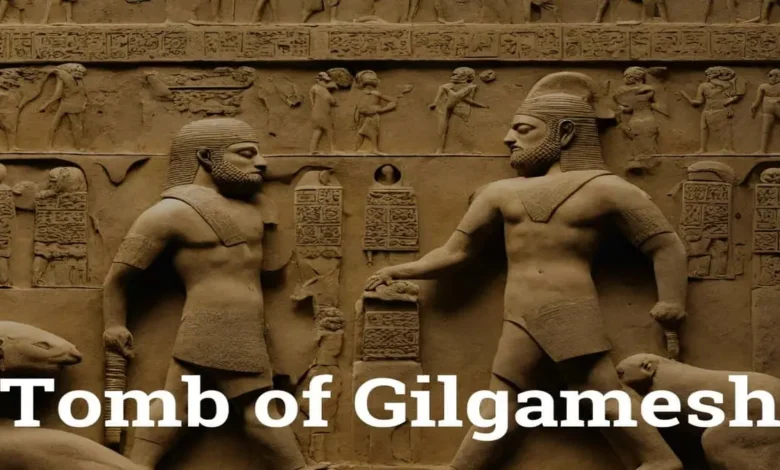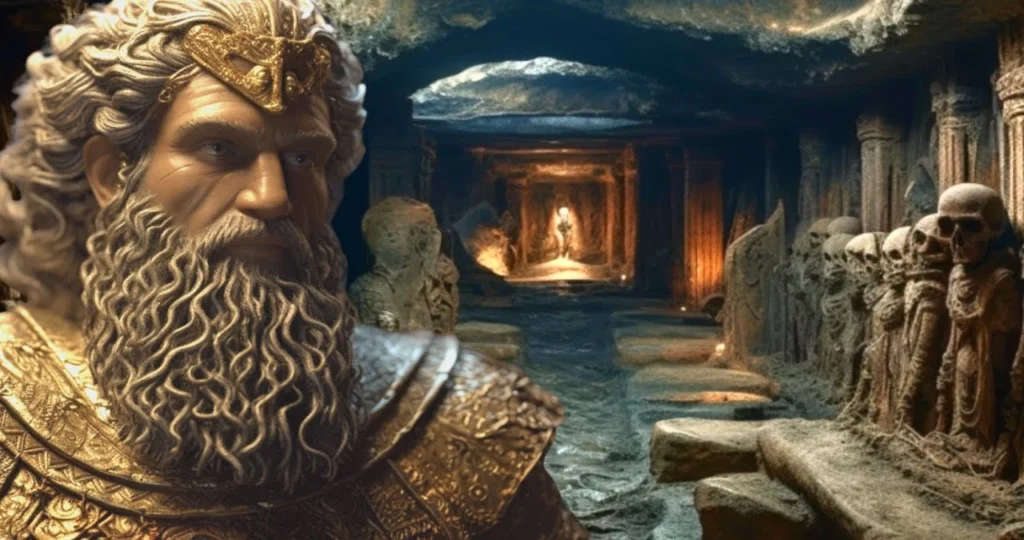Gilgamesh Tomb: The Legend That Continues to Captivate Archaeologists and Historians

The Gilgamesh Tomb story of Gilgamesh, the legendary king of Uruk, has fascinated humanity for millennia as the protagonist of the Epic of Gilgamesh, one of the oldest known pieces of literature, his tale of heroism, friendship, and the quest for immortality has left an indelible mark on history. Yet, one of the most enduring mysteries surrounding Gilgamesh is the location of his tomb. For archaeologists and historians, searching for Gilgamesh’s tomb is not just a quest for a physical site but a journey into the heart of ancient Mesopotamian culture, mythology, and the human desire to conquer death.
In this article, we Gilgamesh Tomb delve into the legend of Gilgamesh, the historical and archaeological evidence surrounding his tomb, and why this ancient mystery continues to captivate scholars and enthusiasts alike.
Who Was Gilgamesh?

Gilgamesh Tomb is believed to have been a historical king who ruled the Sumerian city-state of Uruk around 2700 BCE. Over time, his deeds were immortalized in the Epic of Gilgamesh, a collection of poems and stories written on clay tablets in cuneiform script. The epic portrays Gilgamesh as a larger-than-life figure—part god, part man—who embarks on adventures with his loyal friend Enkidu.
The epic explores mortality, friendship, and the search for eternal life. Gilgamesh Tomb After Enkidu’s death, Gilgamesh becomes consumed by the fear of his mortality and sets out on a quest to find the secret of immortality. Although he ultimately fails, his story has resonated across cultures and centuries, making him one of the most iconic figures in ancient literature.
The Mystery of Gilgamesh’s Tomb
The Epic of Gilgamesh Tomb hints at a tomb for the legendary king. According to the text, Gilgamesh was buried beneath the Euphrates River in a tomb constructed by the people of Uruk after his death. The epic describes how the river was diverted to create the burial site, which was then sealed and returned to its natural course.
This tantalizing clue has led many to wonder: Gilgamesh Tomb Could Gilgamesh’s tomb still exist today? And if so, where might it be located?
Archaeological Searches for Gilgamesh’s Tomb
Archaeologists have found the search for Gilgamesh’s tomb challenging. Mesopotamia, where Uruk was located (modern-day Iraq), is home to some of the world’s oldest civilizations. However, centuries of warfare, environmental changes, and urban development have made it challenging to pinpoint ancient sites precisely.
1. The Discovery of Uruk
Uruk, ruled by Gilgamesh Tomb, was rediscovered in the mid-19th century by British archaeologist William Loftus. Excavations revealed a sprawling town with impressive structures, including the famous ziggurat of Uruk. While these findings confirmed the historical existence of Uruk, no definitive evidence of Gilgamesh’s tomb has been found within the city’s ruins.
2. The Euphrates River Theory
The Epic of Gilgamesh Tomb suggests that the tomb was built beneath the Euphrates River, leading some archaeologists to focus their efforts on areas near the river. However, the Euphrates has shifted its course over millennia, making it difficult to determine the exact location described in the epic.
In 2003, a team of German archaeologists claimed to have discovered the ancient city of Uruk’s burial grounds, including a structure that could potentially be Gilgamesh Tomb. While the findings were intriguing, conclusive evidence linking the site to Gilgamesh remains elusive.
3. Modern Technology and the Search
Advances in technology have renewed hope in the search for Gilgamesh’s tomb. Ground-penetrating radar, satellite imagery, and other non-invasive techniques have allowed archaeologists to explore potential sites without extensive excavation. These tools have uncovered hidden structures and waterways that could align with the descriptions in the Epic of Gilgamesh.
The Symbolism of Gilgamesh’s Tomb
Beyond the physical search, Gilgamesh’s tomb holds deep symbolic significance. In the epic, the tomb represents the culmination of Gilgamesh’s journey—a recognition of his mortality and the legacy he leaves behind. For modern audiences, the tomb symbolizes humanity’s eternal struggle with death and the desire to leave a lasting mark on the world.
The quest for Gilgamesh Tomb also reflects the broader goals of archaeology: to uncover the truths of our past and connect with the stories that have shaped human history. Whether or not the tomb is ever found, the search is a testament to the enduring power of Gilgamesh’s legend.
Why Gilgamesh’s Tomb Captivates Us
1. A Link to Ancient Mesopotamia
Gilgamesh Tomb represents a tangible connection to one of the world’s earliest civilizations. Mesopotamia is often called the “Cradle of Civilization,” and the tomb’s discovery would provide invaluable insights into the Sumerians’ culture, religion, and daily life.
2. The Intersection of Myth and History
The story of Gilgamesh blurs the line between myth and history. While he is believed to have been a real king, his epic is filled with fantastical elements. Finding his tomb could help scholars better understand how historical figures were mythologized in ancient cultures.
3. The Universal Quest for Immortality
Gilgamesh’s fear of death and quest for immortality resonate with people across time and cultures. His tomb serves as a reminder of humanity’s desire to overcome mortality and achieve eternal life.
4. The Thrill of Discovery
The search for Gilgamesh’s tomb is a modern-day adventure akin to the quests described in the epic. The possibility of uncovering such a significant archaeological find continues to inspire and excite both professionals and amateurs.
Challenges in the Search for Gilgamesh’s Tomb
Despite the excitement surrounding the search, there are significant challenges:
- Environmental Changes: The shifting course of the Euphrates River and the erosion of ancient sites have made it challenging to locate the tomb.
- Political Instability: Ongoing conflicts in Iraq have hindered archaeological efforts and made it dangerous for researchers to work in the region.
- Lack of Direct Evidence: While the Epic of Gilgamesh provides clues, it is not a historical document, and its descriptions may be symbolic rather than literal.
Conclusion: The Enduring Legacy of Gilgamesh
The search for Gilgamesh’s tomb is more than an archaeological endeavour—it is a journey into the heart of human history and mythology. Whether or not the tomb is ever found, the legend of Gilgamesh continues to captivate us, reminding us of our shared humanity and the timeless quest for meaning and immortality.
As archaeologists and historians continue to explore the ancient landscapes of Mesopotamia, the mystery of Gilgamesh’s tomb remains a symbol of the enduring power of storytelling and the unyielding human spirit. Perhaps, one day, the tomb will be discovered, shedding new light on the life and legacy of one of history’s most fascinating figures. Until then, the legend of Gilgamesh will continue to inspire and intrigue future generations.
By exploring the mystery of Gilgamesh’s tomb, we not only uncover the secrets of an ancient king but also connect with the universal themes that have defined humanity for thousands of years. The search for Gilgamesh’s tomb is a testament to the enduring power of history and myth and the human desire to leave a lasting legacy.
FAQs
- Who was Gilgamesh, and why is his tomb significant?
- Gilgamesh was a legendary king of Uruk, a city in ancient Mesopotamia believed to have ruled around 2700 BCE. He is the central figure in the Epic of Gilgamesh, one of the oldest known works of literature. His tomb is significant because it represents a potential link between myth and history, offering insights into ancient Sumerian culture and the human quest for immortality.
- What does the Epic of Gilgamesh say about his tomb?
- The Epic of Gilgamesh suggests that Gilgamesh was buried beneath the Euphrates River. According to the text, the people of Uruk diverted the river to construct his tomb, which was then sealed and returned to its natural course. This description has fueled centuries of speculation and archaeological searches.
- Has Gilgamesh’s tomb been found?
- As of now, Gilgamesh’s tomb has not been definitively found. While archaeologists have discovered the ancient city of Uruk and other significant Mesopotamian sites, conclusive evidence of Gilgamesh’s burial place remains elusive. Some theories and potential sites have been proposed, but none have been confirmed.
- Why is it so challenging to locate Gilgamesh’s tomb?
- Several challenges make the search difficult:
- The Euphrates River has shifted its course over millennia, making it hard to pinpoint the exact location described in the epic.
- Environmental changes and urban development have altered the landscape of ancient Mesopotamia.
- Political instability in modern-day Iraq has hindered archaeological efforts.
- The Epic of Gilgamesh is a literary work whose descriptions may be symbolic rather than literal.
- What would the discovery of Gilgamesh’s tomb mean for archaeology and history?
- The discovery of Gilgamesh’s tomb would be a monumental achievement for archaeology. It would provide invaluable insights into ancient Sumerian culture, burial practices, and the historical basis for the Epic of Gilgamesh. Additionally, it would bridge the gap between myth and history, offering a deeper understanding of how ancient civilizations memorialized their heroes and rulers.





